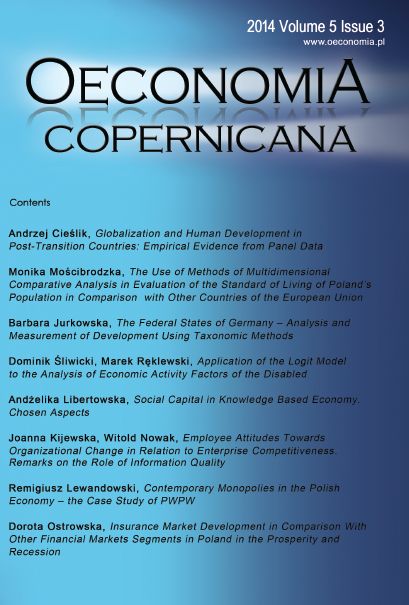The Federal States of Germany – Analysis and Measurement of Development using Taxonomic Methods
The Federal States of Germany – Analysis and Measurement of Development using Taxonomic Methods
Author(s): Barbara JurkowskaSubject(s): Economy
Published by: Instytut Badań Gospodarczych
Keywords: taxonomic methods; federal states of Germany; regional development
Summary/Abstract: This article presents an analysis of the socio-economic development of the 16 federal states of Germany as compared to the whole country. The main goals of the analysis are to measure the development with the use of selected taxonomic methods, to examine the similarities and differences between the states inasmuch as that development is concerned, as well as to illustrate the distance existing between the new eastern states (Brandenburg, Mecklenburg-Vorpommern, Saxony, Saxony-Anhalt, and Thuringia) and the remaining states of Germany. The analysis is preceded by an illustration of the present socio-economic situation of the German states. Germany is characterized by internal diversity as regards the socio-economic development, and the policy of supporting the East German economy has failed to reach its goals. An unfavourable demographic situation is a factor that effectively inhibits the development of the new states. A falling birth rate, an increasing population beyond retirement age, as well as great numbers of people emigrating to West Germany all contribute to the depopulation of the eastern states. The taxonomic analysis of the level of socio-economic development of Germany has provided information about the diversity of that development level, but it has also made it possible to determine and set the direction of development for particular states.
Journal: Oeconomia Copernicana
- Issue Year: 5/2014
- Issue No: 3
- Page Range: 49-73
- Page Count: 24
- Language: English

